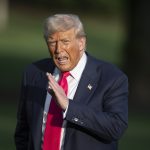Economic uncertainty tends to ignite heated discussions about the likelihood of a recession, especially during the tenure of a sitting president. In the case of the United States under President Donald Trump, the question of an impending recession becomes a complex puzzle sewn together by historical patterns, contemporary economic data, and political policy choices. The tangled interplay between political stewardship, market reactions, and economic cycles demands a thorough and nuanced examination.
Historical Patterns and Political Leadership
Over more than a century of recorded economic data, a compelling pattern emerges: recessions often coincide with Republican presidencies. Studies analyzing in excess of 110 years reveal that economic downturns and GOP administrations frequently overlap. This recurring historical correlation sets the stage for heightened caution when assessing the economic trajectory under Trump. Early indicators from GDP data are cause for concern, as the first quarters of his presidency reflected slowing growth, a classic harbinger of potential recession. However, history does not serve as a perfect crystal ball. Economic realities are shaped by myriad forces — fiscal policy adjustments, volatile global markets, and unforeseen shocks — all of which can blur simple cause-and-effect interpretations.
The Trump Era’s Monetary and Market Environment
The monetary context throughout Trump’s presidency adds extra layers of complexity. Federal Reserve Chair Jerome Powell sought to steady frayed nerves by emphasizing market stability, despite an assortment of economic headwinds. Yet, market volatility has been painfully obvious. Sharp sell-offs in major indices like the Dow Jones Industrial Average, S&P 500, and Nasdaq Composite mark Trump’s early term as some of the most turbulent in modern presidential history. These upheavals owe much to Trump’s aggressive tariff strategy and the resultant trade wars, especially with Canada, Mexico, and China. Tariffs disrupted supply chains and injected uncertainty into investment climates, with many economists branding this approach as reckless—an “agent of chaos and confusion.” While intended as protectionist measures to strengthen domestic manufacturing, the tariffs increased costs for businesses and consumers alike, raising doubts about the net economic benefit.
Trump himself has acknowledged the tension between short-term disruptions and long-term gains. He frequently referred to the economy’s potential “period of transition” or “disturbance” as tariff measures took hold. His argument rests on a gamble: enduring temporary pain through market fluctuations and trade friction might spawn robust domestic manufacturing growth and invigorate investment down the line. Yet, financial experts question whether the economic damage caused by increased costs and volatile markets might overshadow these hoped-for benefits. The “liberation day” tariffs, it seems, may ultimately tilt the scales toward recession risk.
Economic Indicators and Recession Risks
Defining recession in technical terms means scrutinizing key metrics such as production volumes, employment statistics, and income data over sustained periods. Traditionally, economists look for two consecutive quarters of negative GDP growth as a benchmark. Under Trump, the appearance of back-to-back negative GDP quarters mirrors conditions last observed during major economic transitions like those following the Korean War in the early 1950s. This historic parallel underscores the fragility of the current recovery and sends a cautionary signal about extended periods of economic decline.
Market analysts further draw on historic analogies and recession prediction models to forecast future trends. Valuation metrics and technical indicators within market indices point to vulnerabilities that cannot be ignored. Still, while jittery, some investors maintain an optimistic stance, banking on eventual policy recalibrations and resilience in corporate earnings to stabilize markets. The conflicting voices in the investment community reflect the inherent unpredictability of markets, shaped by both historical cycles and human decisions.
Summarizing the outlook, the convergence of robust historical evidence and contemporaneous economic data under President Trump signals an elevated probability of recession but not an inevitability. Ongoing trade disputes, tariff-driven cost inflation, and early signs of GDP contraction increase economic slowdown risks. Simultaneously, reassurances from policymakers and expressions of confidence point to a fine balancing act between short-term disruption and anticipated future growth. Navigating this complex landscape requires careful evaluation of mixed signals and an acceptance that economic trajectories marry predictable patterns with unpredictable actions. In the end, history offers indispensable guides, yet the future remains unwritten.







